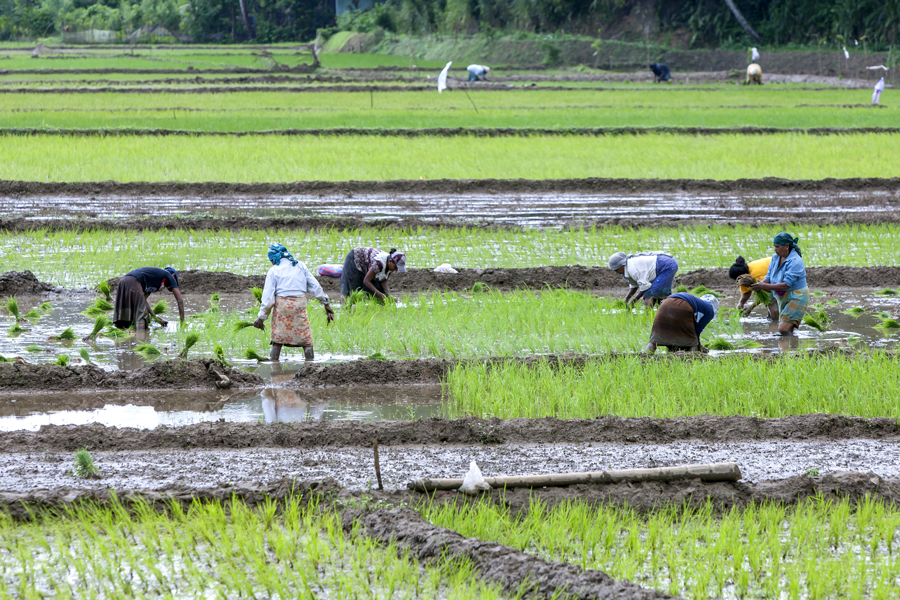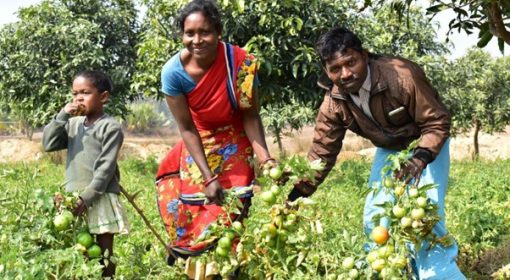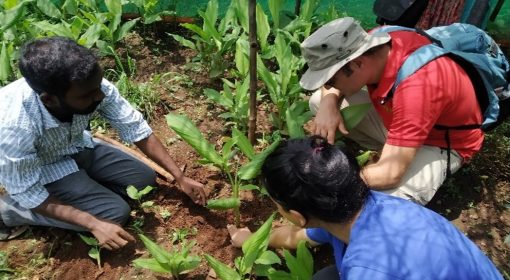By C.M. Wijayaratna, Abraham Abhishek, Meghna Mukherjee

It would be fair to say that there is broad consensus at this point around the benefits of organic agriculture. Everybody understands and acknowledges the downsides of decades of farming based on intensive use of synthetic fertilizers and pesticides, and the need to regenerate the soil reeling from it. In markets across the world, organic produce and products are available at a markup. Organic sections at supermarkets are becoming larger and larger.
Where should we be headed? Should we try to get to a situation where all agriculture is organic agriculture and all produce is organic? Or should organic systems support/ be supported by more industrial systems of production? How do we advance towards that stage? What should the first steps be?
Although these questions are of global significance and have global implications, it is up to sovereign nations to address them and chart their own courses. In April 2021, Sri Lanka decided to go cold turkey—then-president Gotabaya Rajapaksa announced that only organic agriculture would be allowed then onwards, imposing a nationwide ban on the import and use of synthetic fertilizers and pesticides (along with around 600 other food items such as oats, soy milk, and dairy).
Nobody would have expected any pathway to organic agriculture to be smooth and painless, but this particular one has led to steep falls in agricultural production, farm incomes, and availability of agricultural produce in consumer markets. Prices of staples, such as rice, shot up by more than 50%. For the first time in more than 40 years, Sri Lanka had to import $450 million worth of rice.
Sri Lanka’s political-economic crisis is broad-based, a result of failures on several fronts of the economy and governance. However, it is increasingly being foisted on the decision to switch to organic agriculture. The country is being held up as an example of the inadequacies of organic farming itself.
Neighbouring India is dealing with its own set of issues in its drive to promote organic farming. The organic inputs (fertilizers/pesticides) market is under-developed and tainted by products which are organic in name only. The extension system lacks the capacity to provide farmers the information and support they need to switch from conventional farming and stay the course. Even when all the information and all the inputs are available, most smallholder farmers do not have the financial cushion required to withstand the 1.5-2 years of lower yields and lower incomes which is inevitable if they switch to organic.
Nevertheless, slow progress is being made. India is a federation of states– the states have a fair amount of autonomy in determining and implementing their agricultural policy, and some states (such as Sikkim, Chhattisgarh, Andhra Pradesh) are doing better than others. Centre for Science and Environment’s (CSE) report ‘State of Organic and Natural Farming in India- Challenges and Possibilities’ offers a good compilation of the state of affairs, which is far from ideal. However, the broad takeaway from a Sri Lankan perspective is that there are gains to be made when strategies are devised and implemented over a longer term. The organic transition in Sikkim—one of the smallest Indian states often held up as a poster child of organic transition—was rolled out over almost 10 years. This time was taken to carry out consultations, research, capacity building, creating value chains of organic farm inputs and produce, and developing market linkages.
Beyond the central message of ‘taking the time,’ Sri Lanka would have to chart its own specific course to organic agriculture, which corresponds to its own specific context. Following are some broad steps that could shape a pathway out of the ongoing crisis:
- Resuming fertilizer import, phasing it out: Sri Lanka’s farmers are struggling to meet their farm input needs. This requires immediate redressal and the only way to do that is through resumption of fertilizer imports. At the same time, it would be important to phase out the imports over 10 years or so. During that period, steps should be taken to promote biofertilizers and ensure their availability.
- Restoring Soil health: Organic agriculture requires healthy soils. Sri Lankan soils are currently reeling under decades of chemical fertilizer use. Measures to restore soil health should be taken immediately; one of them should be to roll out campaigns to plant leguminous crops. Besides, nature-based methods of enhancing soil microbial activity coupled with high-yielding climate-smart agroecological practices like the Systems of Rice and Crop Intensification (SRI-SCI) will accelerate the soil restoration process and improve crop yield.
- Planning around natural boundaries: Planning related to agriculture and the natural resource base around it currently happens at the level of administrative units (districts and divisions). Alternatively, watershed/contour-based planning and implementation would be much more effective in restoring the health of water resources, and addressing issues like agricultural pollution.
- Empowering farmer organisations: Cooperatives and farmers organisations around specific agricultural products do exist, but creation of more of them should be stimulated. Most important is the need to ensure the inclusion of a large number of smallholder farmers in such organisations, and that they truly represent their interests and visions.
- Sourcing, heeding to expert advice: A body of experts from various fields—agronomy, economics, the civil society, etc.—should advise the President on the country’s organic transition.
For a more detailed discussion on this topic, please listen to this podcast:



